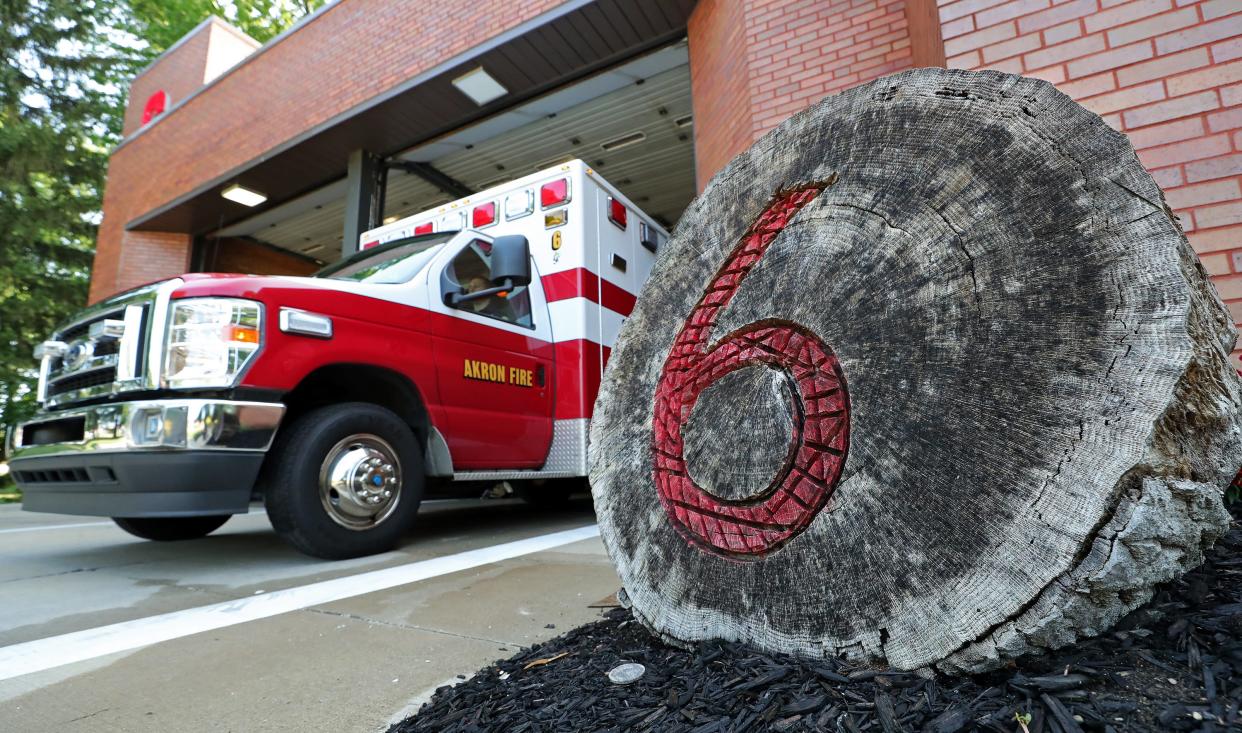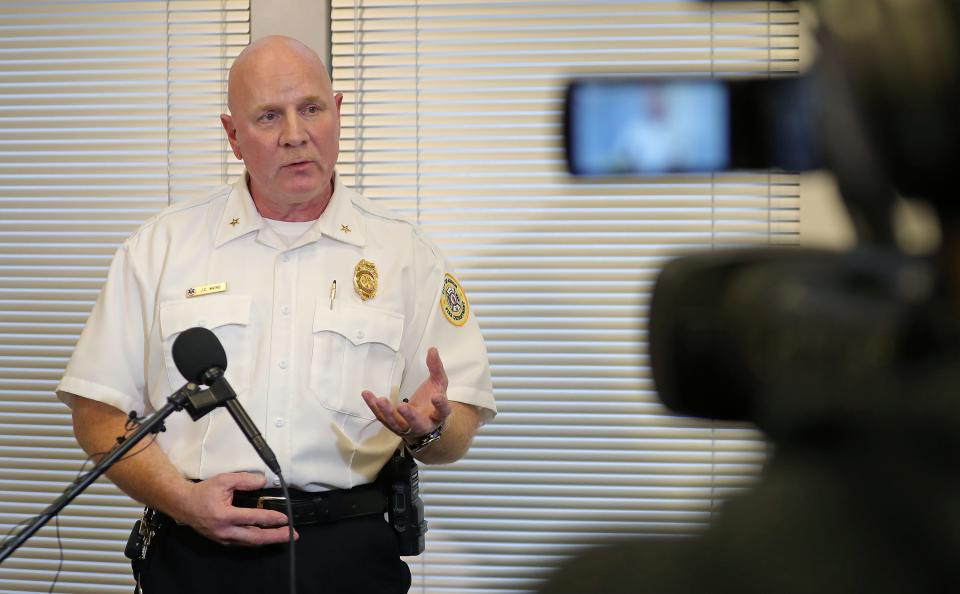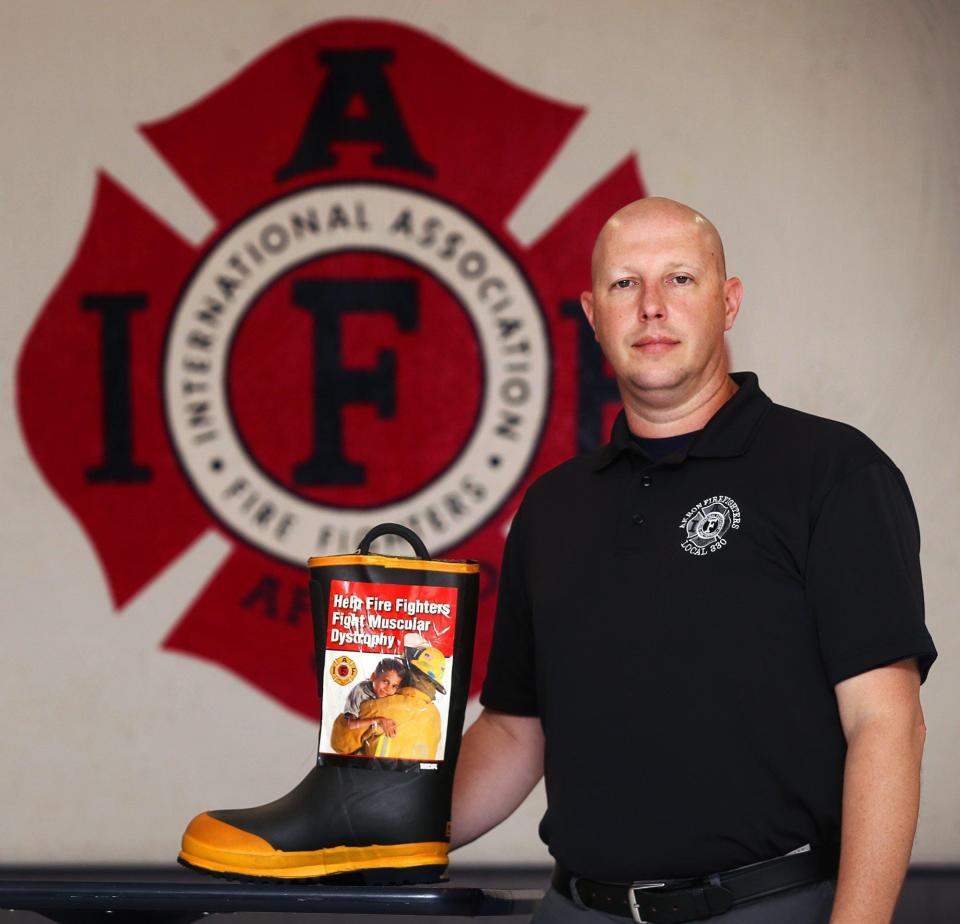Some Akron firefighters work so much overtime they make more than the mayor

Two Akron firefighters made between $115,130 and $128,691 last year — just in overtime.
Add in their regular pay at $34.18 an hour (or about $80,000) and they both made more than the mayor.
The eye-popping payroll figures underscore the heavy use of overtime — not just in fire but police, too — as the city of Akron plugs budget shortfalls with one-time federal COVID-19 dollars that will be gone next year.
The city leveraged flexible spending rules for it allocation of $145 million in federal money from the $1.9 trillion American Rescue Plan Act. Mayor Dan Horrigan's plan to allocate all the money before he leaves office in January includes putting 25% of the windfall toward payroll expenses to cover overtime or bonuses for all union employees, with enough left over to subsidize downtown parking decks with a surplus of empty spaces and annual deficits.
The allocation of federal money for local payroll expenses, which qualify under the broader category of "revenue loss and budget stabilization," are covering most of the $14 million budgeted in overtime this year, Finance Director Steve Fricker told City Council this year in an update on ARPA spending.
Overtime spending in the police department jumped during the pandemic from $2 million in 2020 to about $4.5 million last year. Supervisors in public service and employees in the emergency medical service divisions are also driving up overtime expenses.
But leading the issue is the fire department, where overtime has more than tripled in the past three years.
While Fricker has budgeted less than the $16.9 million in overtime pay recorded last year, the time-and-a-half column on paychecks is only expected to grow for the fire department as a shortage of overworked paramedics take on 13,000 additional ambulance runs to hospitals. Private ambulance company AMR recently dropped its no-cost city contract to transport (and privately bill) patients with non-life-threatening conditions.
Who else made more than the mayor?
Eight employees earned more than Horrigan's $194,032 salary last year.
The two firefighters who earned $195,393 and $208,992 total made less than six city administrators who retired last year and cashed out the paid time off they've been rolling over from year to year. One fire administrator, who was promoted from captain to deputy chief in 2015, earned $304,035 before taxes after retiring in August.
None of the six retired administrators have been rehired by the city, Fricker said. But two — a longtime engineer in the water department and leading architect of the $1 billion-plus sewer reconstruction project, and another administrator overseeing the operation and maintenance of water meters — now work as consultants for private companies that are contracted by the city.
Including contractually obligated overtime for training and other reasons, the Beacon Journal estimates that the two firefighters who made more than the mayor regularly worked their two 24-hour weekly shifts, plus three or more 12-hour overtime shifts. The two have more than 10 years experience, which means they've done their mandatory tour as paramedics and now spend their time as firefighters. Paramedics are also stationed at fire stations but get less downtime as they respond to round-the-clock 911 calls for medical emergencies.
What city jobs pay the most overtime?
Of the 2,559 city employees who received W-2 tax summaries of their earning last year, 187 made more in overtime alone than the $24,530 annually that the median worker takes home in Akron, according to the U.S. Census Bureau. Most are firefighters or medics (58), fire lieutenants, captains or district chiefs (42), police officers (29), public works supervisors (19) and police sergeants, lieutenants or captains (12).
Overtime is 10% of the city's $175.9 million in overall payroll but 15% for public safety administration, EMS and the capital budget divisions, 14% for fire, 13% for public works and 9% for police. Due to their sheer size, fire ($4.3 million) and police ($4.6 million) accounted for most of the $16.9 million in overtime clocked last year.
Police Chief Steve Mylett declined an interview to talk about overtime, which is offered by seniority to cover operational needs, staffing shortfalls created by vacation or military leave, hard-to-fill shifts and targeted enforcement details like a special anti-gun violence unit.
Fire Chief Joe Natko spoke at length with the Beacon Journal to explain how he's working with union leadership to innovate through the challenges of understaffing until hiring this year and next might supplant the churn of retirees and employees leaving.

The department's current effort to identify and put 25 cadets through the fire academy by December is facing allegations by background investigators that a captain "coached" some applicants on how to avoid disclosing disqualifying drug use. Natko, who isn't talking about the hiring scandal until an internal investigation is complete, told City Council this year that he needs 396 employees to adequately and efficiently respond to increasing fire, medical and other emergency calls.
Natko has 353 firefighters to deploy today, said Kevin Gostkowski, the president of the Akron Fire Fighters Association Local 330 fire union. About 50 will be up for retirement in the next two years. Gostkowski said he expects to see another cadet class hired next year.
What's behind overtime at the fire department?
Adversaries at the contract negotiating table every three years, Gostkowski and Natko agree on a lot, starting with the unprecedented situation of firefighters making almost as much as the chief in overtime alone.
"That has never been done in the past," said Natko, who made $154,178 last year, plus $14,117 in overtime. "So, we are in, I guess, a new time — an extremely, extremely difficult time."
"I've been on 23 years," said Gostkowski. "I have never seen overtime availability the way it has been going on, probably, the last three years."
"We're in a tight spot," the union president said.

Compounding the overtime, which the fire department saw coming late last year, was AMR closing its Akron operation after the city refused to pay the company money to transport patients. Typical EMS runs tie up Akron paramedics for about 45 minutes. Calls handed off to AMR, which ran the patient to the hospital, ate up about 20 minutes of time for paramedics, Gostkowski said.
The city and union agreed in the current three-year labor contract, which expires at the end of 2024, that no firefighter or medic can, or should, work more than 72 consecutive hours, which Natko said is rare but possible. Whenever possible, Natko and Gostkowski said medics are rotated onto fire engines to give them a break from 12-hour shifts of responding to constant emergency calls.
Gostkowski said he is thankful for colleagues like the two firefighters who regularly work 90 or more hours a week, rarely passing up "calls for overtime, because they've been allowing us to keep those trucks in service and continuing to deliver that service that we've been delivering."
Careful not to burnout his employees, Natko prefers to distribute overtime to staff with fewer hours. But, he said, "oftentimes we would not be able to fill all the overtime spots, and we just ended up going getting to these two folks ... who are just seemingly always available."
Fire administrative and union officials say concerns about overtime go beyond the financial cost to taxpayers. Quality of service and the physical and mental well being of employees are at risk if first responders are overworked. Medics are stretched so thin that the overtime they get might be used for a less stressful rotation as a firefighter, but Gostkowski noted that the demand for medics cuts into the time they need to train to fight fires when duty calls.
"Our goal is not only to provide an excellent service to the taxpayer," said Gostkowski, "but to make sure that we take care of our members, because we have to remember that everybody who comes to work here has a family to go home to. Going home exhausted every day when you got a 3-year-old running around the house is tough.
"So, it's a tough balance. We're in a tight spot. Obviously the wildcard of AMR leaving put us in a bind."
Reach reporter Doug Livingston at dlivingston@thebeaconjournal.com or 330-996-3792.
This article originally appeared on Akron Beacon Journal: Akron firefighter overtime soars as 2 earn more than mayor in 2022

